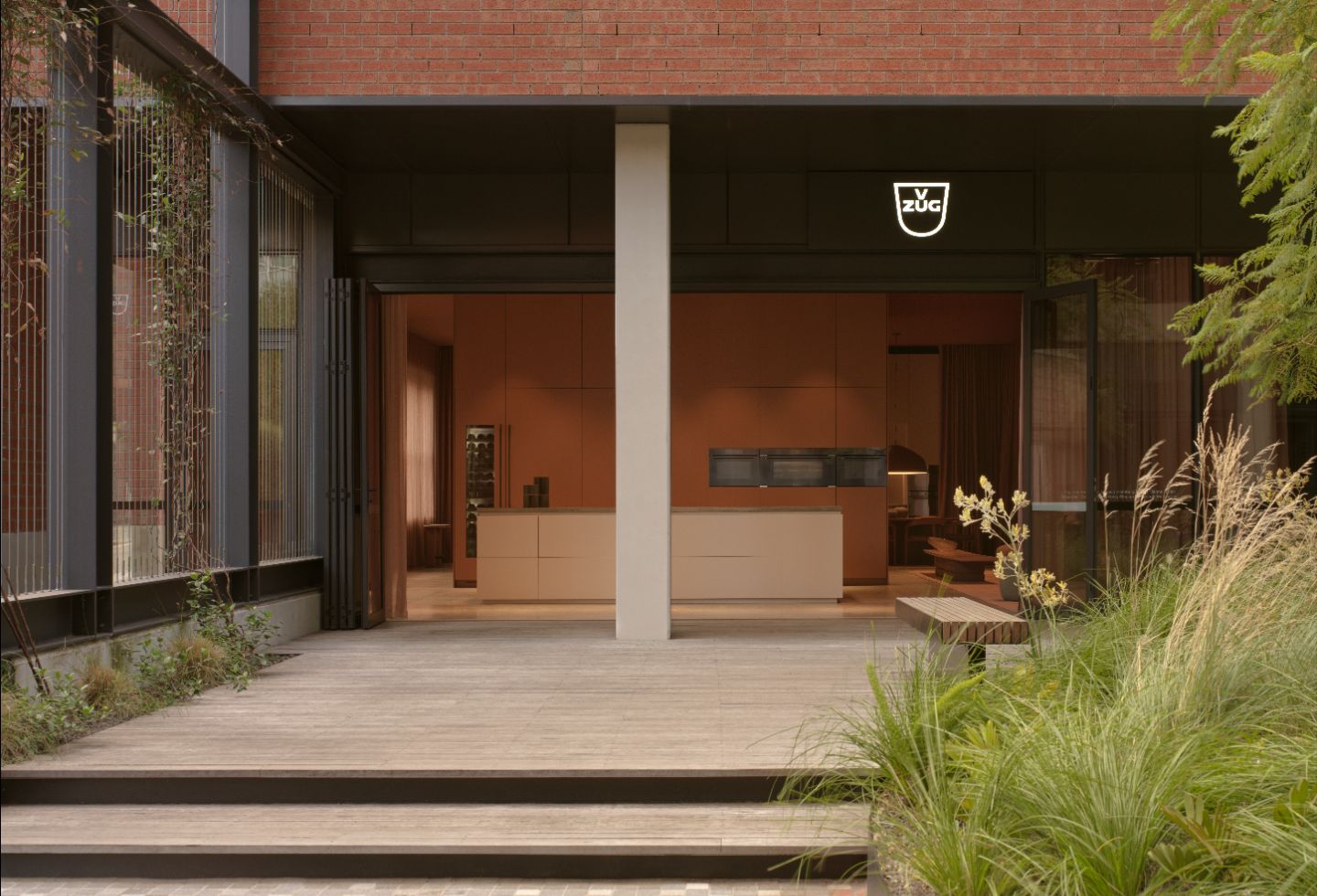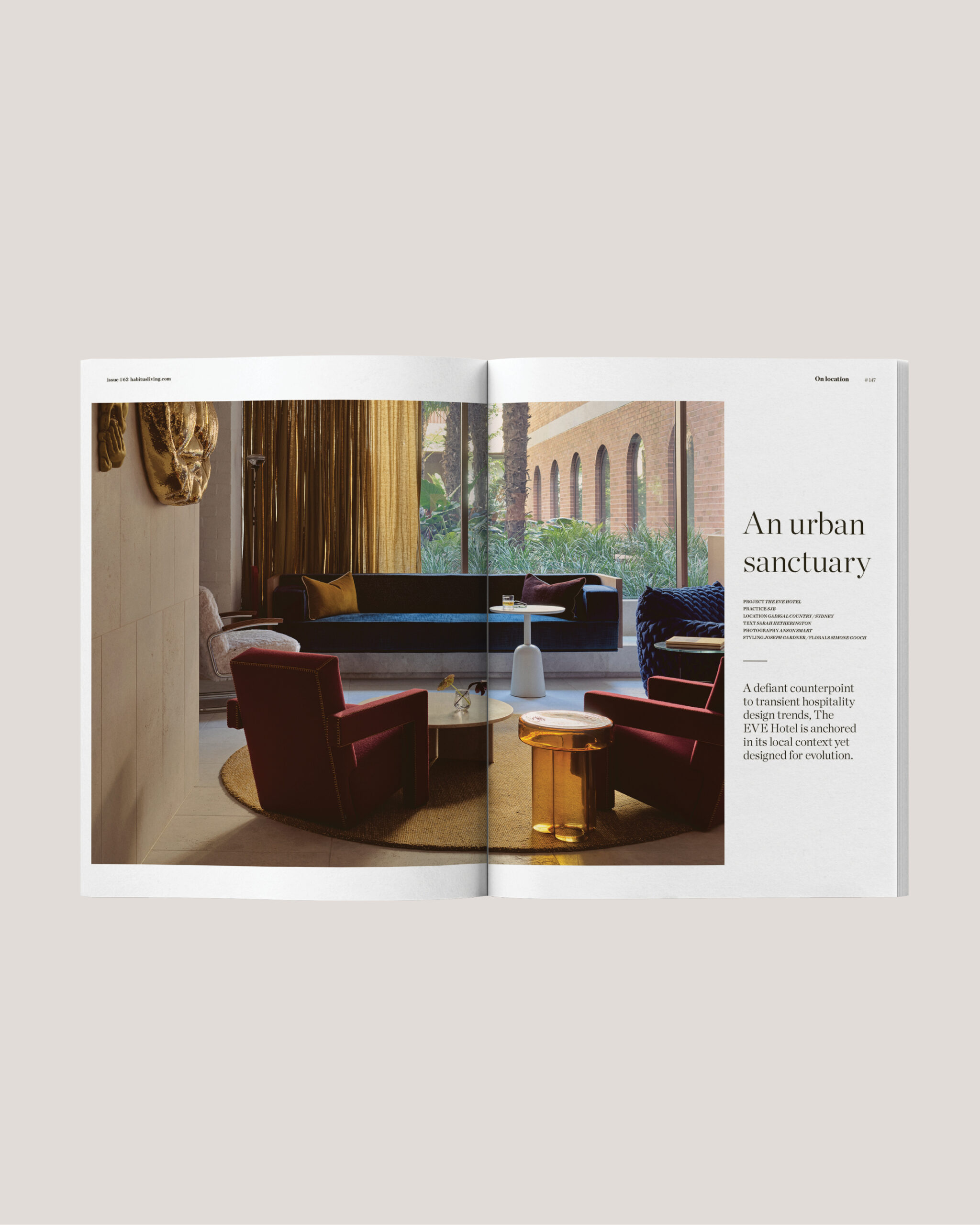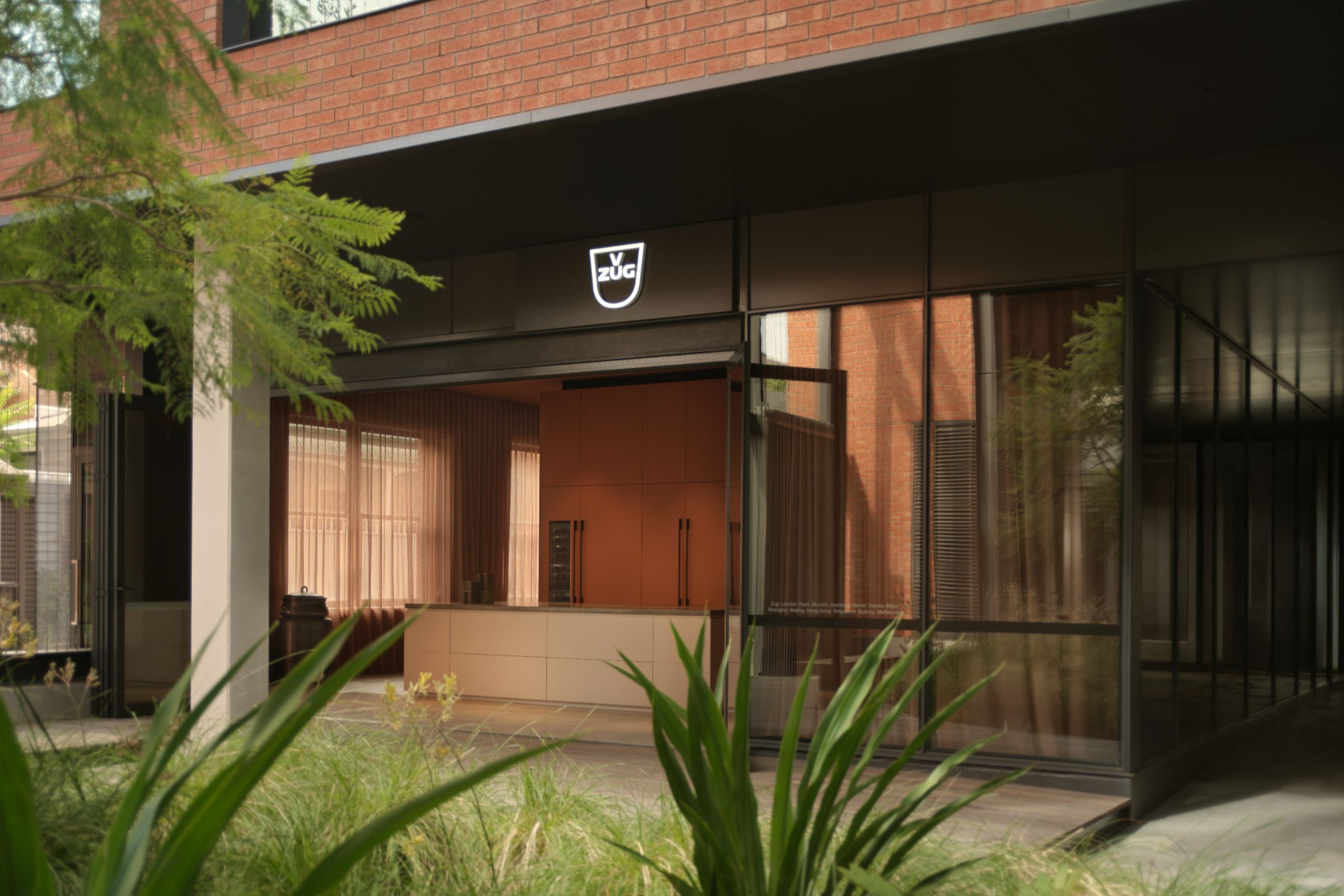Regular readers will be familiar with V-ZUG’s international collection of studios and the Swiss brand’s unique approach to designing for place. Whether it’s the Hausman influences in its Paris space, or a colour palette in Vienna that echoes the pale shades of stone to be found in that city’s historic buildings, you can expect an assured customer experience that combines the company’s resolved visual guidelines with some unexpected local references.
In charge of navigating how to marry V-ZUG’s understated aesthetic with each new city’s context and culture is Global Interior Art Director Gabriel Pinyon. Melbourne might be the 15th mono-brand premises that Pinyon has delivered in his 6 years with the company, but it’s a first for him in a significant way. Where the others have reflected the neutral tones of V-ZUG products (and as meticulously demonstrated in Sydney’s cool, light-grey studio), Melbourne sees the first bold use of colour.
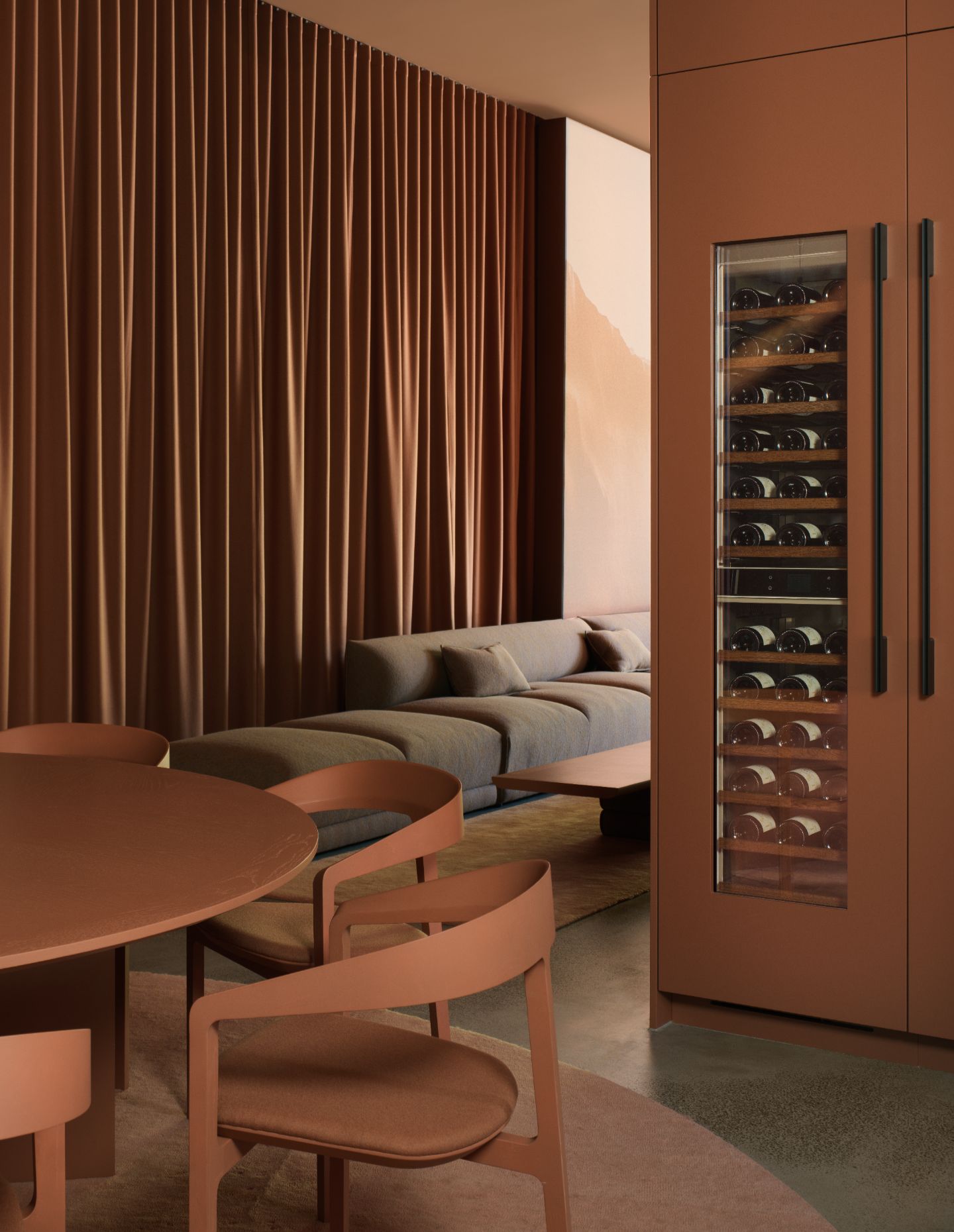
“When we are working on a project, we have the country or the city in our mind and we want to connect with that,” says Pinyon. “I travelled the outback 20 years ago backpacking, and Australia for me is this earth colour, the sunsets, red and dry. For a long time we’ve wanted to introduce colour, to play with colour, to bring the brand to another level, and it was the right decision here.”
The V-ZUG’s Australian-based team enlisted the help of Dulux’s in-house experts to work through what Pinyon jokes felt like “25,000 variations” to finally arrive at Coyote, a colour that can beautifully moderate different light levels across the day and which, according to Dulux’s Colour and Communications Manager, Andrea Lucena-Orr, exudes strength and security.
“From a psychological perspective, it’s a very grounding colour. Obviously a kitchen is a big purchase in any renovation and the fact that there’s this really nurturing colour in the showroom, when people are possibly in an anxious state deciding on their expensive kitchen elements, it’s a good fit and helps balance that experience out.”
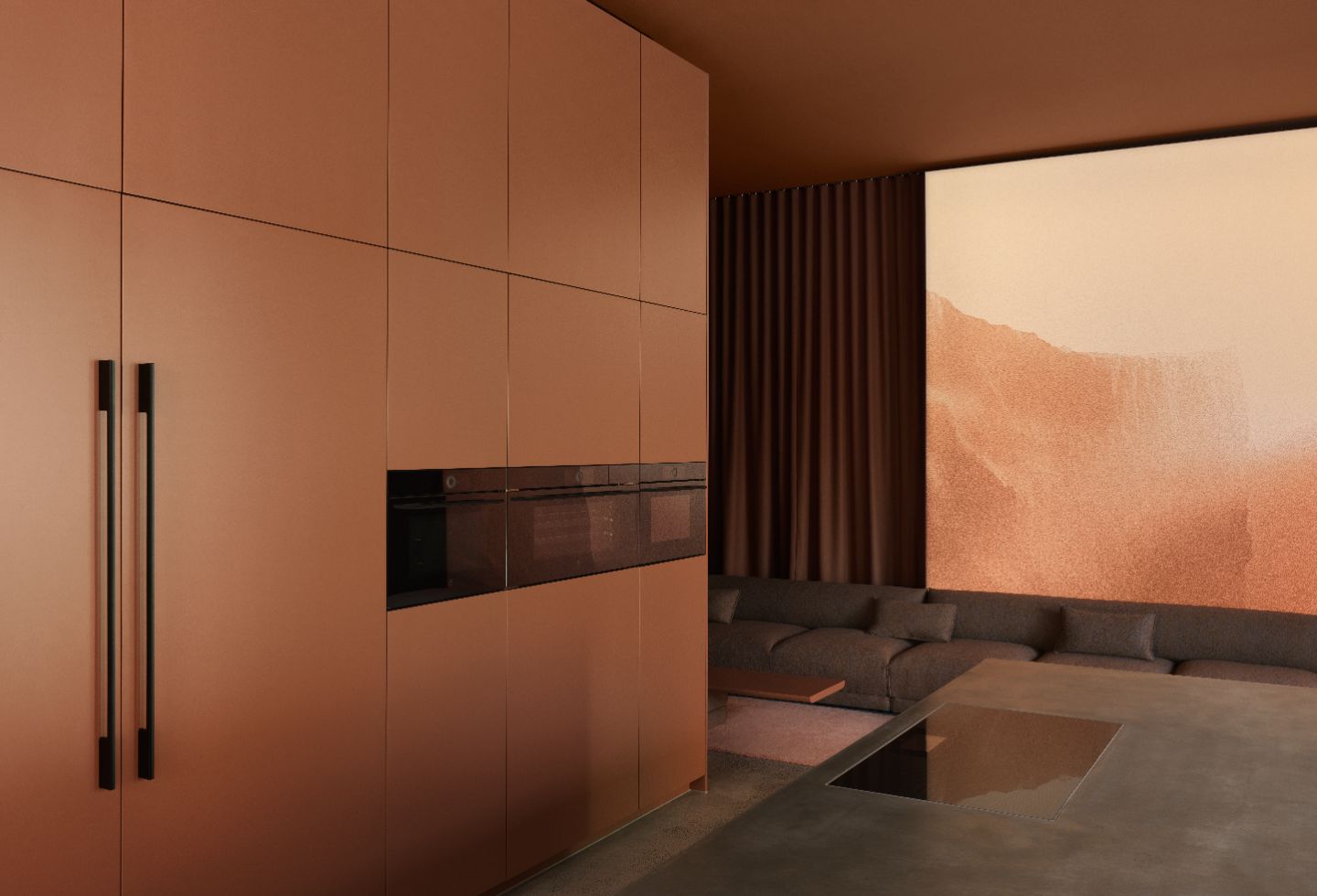
Lucena-Orr says the V-ZUG studio is a perfect example of how to use colour drenching in a commercial setting: “There’s the emphasis on that overarching sense of colour, and then bringing in those elements you really want to focus on – the appliances – to create an enriched environment for selecting that product. It’s a beautiful space to be in, and it’s not somewhere that you want to leave quickly. You’re very happy to sit there, it’s very comfortable.”
The challenge of creating a luxurious but welcoming space is at the heart of Pinyon’s approach: “Our message is that we’re premium, but we’re not elitist. We are welcoming you, but we don’t dictate how you experience the space. So it’s not a space where you see everything at the same time. You walk around the space, and you are discovering the space by yourself – this is very V-ZUG. So, yes, I’m checking the design and checking details, but it’s also about the whole experience.
A key part of that whole experience is provided by the many events held in any V-ZUG Studio, which offer a gateway introduction to the brand and where the needs of its in-house Gourmet Academy as well as guest chefs also need to be considered. Pinyon worked closely with the Australian team to develop 3 interconnecting and highly functional spaces that can accommodate different sized groups and service settings, as well as provide distinct spaces to highlight the brand’s three appliance finishes in black, pearl and platinum.
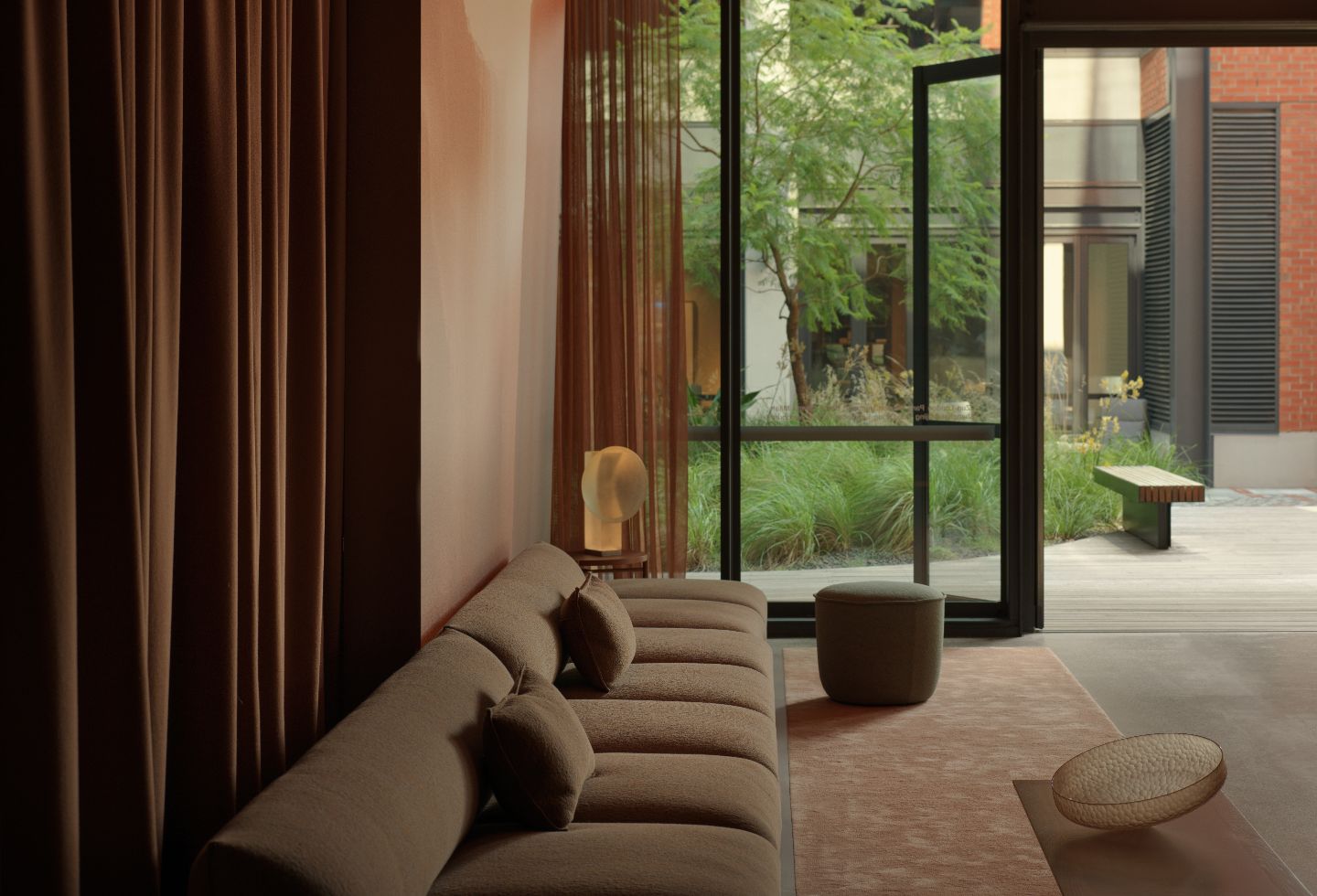
To find a memorable way to present their culinary efforts, V-ZUG sought the guidance of regular collaborator Jaci Foti-Lowe of The Front Room Gallery, who facilitated the commissioning of a unique dinner service made in Melbourne by a Japan-based Italian ceramicist, Marzia Alesini, and sourced a mix of feature glassware pieces designed by Melbourne’s Skeehan Studio that was brought to life by artisans at Canberra Glassworks.
“It doesn’t take any design savvy to recognize that the Skeehan bowls are extraordinarily beautiful,” says Foti-Lowe. “They are unbalanced and pivot on a point, they’re delicate and robust, they’re functional and sculptural, they need nothing but they can do anything.”
The bowls were one of a shortlist of potential pieces provided by the Front Room Gallery that reflected the brief and the context, for V-ZUG and Pinyon to then consider.
“In designing their studios V-ZUG takes into consideration the environment that the studio exists in – cultural, eating, landscape, climate – all the things that go into good design. When you iterate a place, you either allow or disallow elements of your surroundings and culture to influence what you do, and in this studio, there’s the influence of the colour palette, Australia, etc. So I’m not creating anything new – my job is to listen to the client and find the threads that have been woven together and then select pieces that reverberate the same energy.”
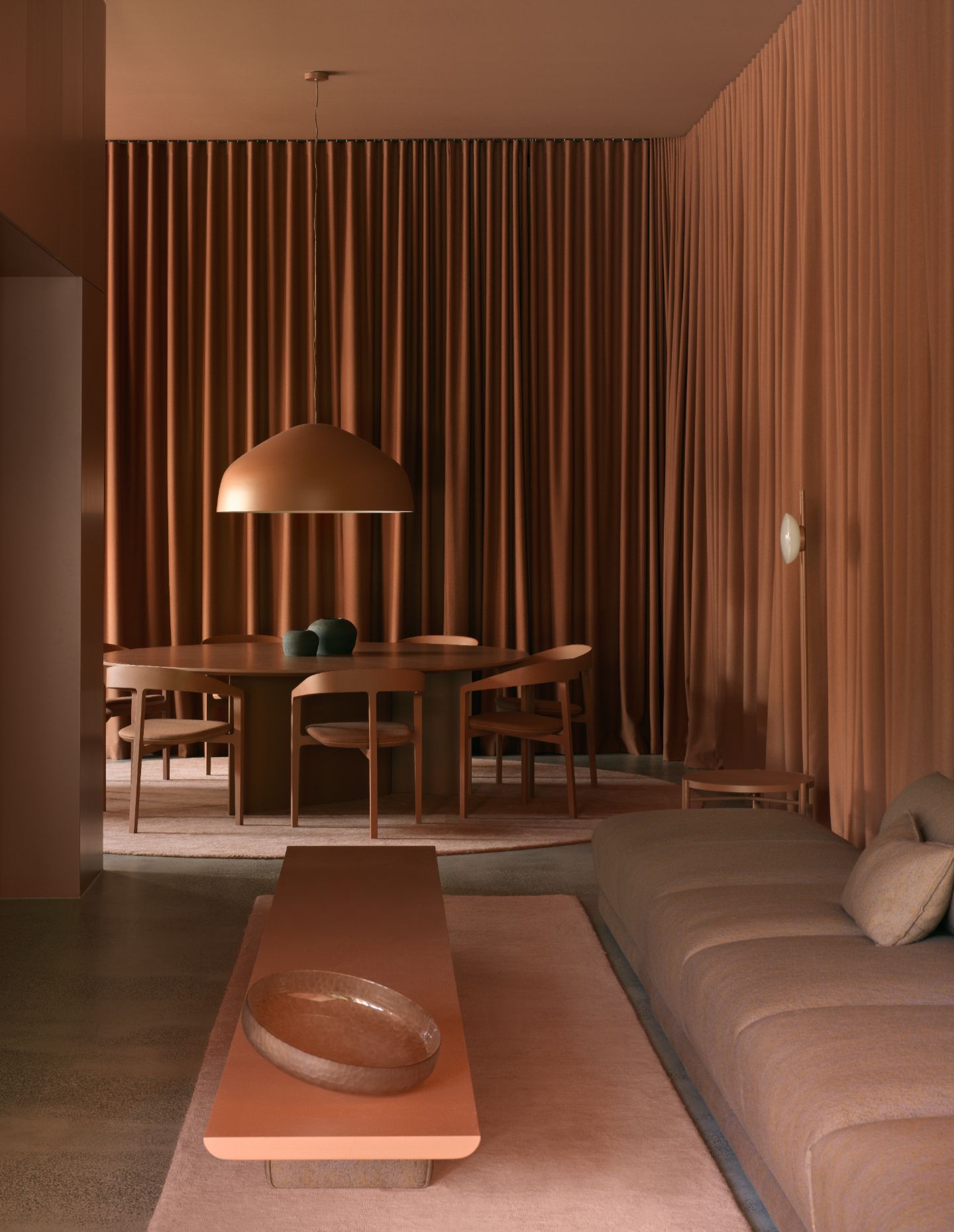
It’s a part of the process for each studio that Pinyon relishes: “We like to work with the smaller companies and designers who are doing something special, who are sharing the same values as us, and supporting them. It’s nice to connect with the local design community and it’s also about sustainability.”
The connection with one Australian designer, Ross Gardam, began a number of years ago at a Salone event presented in partnership between V-ZUG and Habitus Living. From that introduction, the conversation has continued with the result that the Melbourne studio features a number of pieces from Gardam’s collection, including a Vestige table lamp (one of only 5 made), alongside some stunning custom pieces, most notably the 8m long lounge. The collaboration was one which saw Gardam and his team connected more heavily into a client’s ideals and aspirations for a specific location or environment.
“Sometimes, if we’re supplying a singular piece, I have no idea of the context of the space,” says Gardam. “Then sometimes, if it’s sold for a distributor halfway around the world, we don’t actually interact with the space at all. So this kind of project is not something that we’ve done a huge amount of in the past, but it was a really enjoyable process to be more connected to this space. There were lots of different conversations with Gabrielle about where there was overlap between my pretty defined aesthetic, and that of V-ZUG’s minimalism, picking apart where the crossover was and how we could design something specifically for them.”
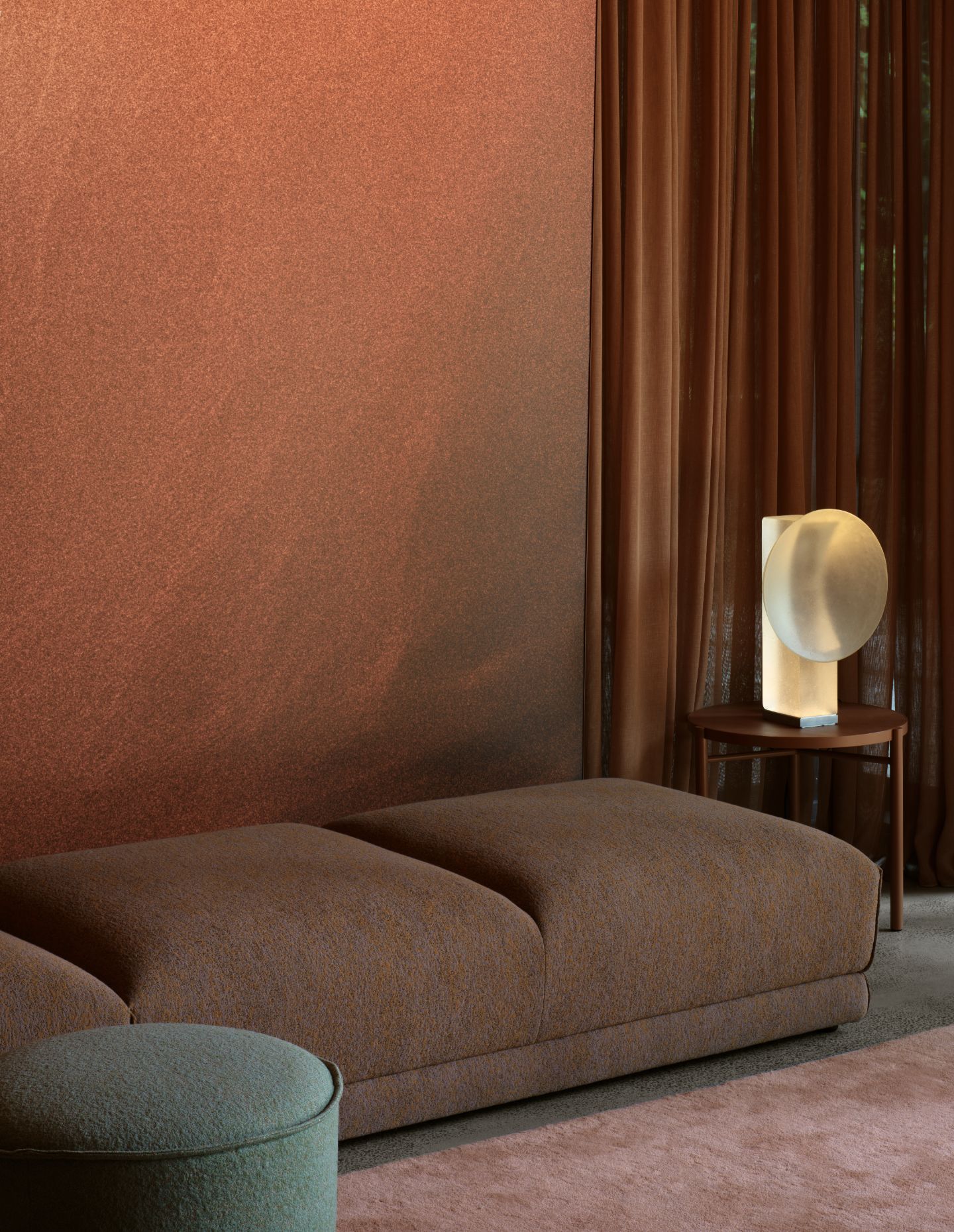
There are nine Gardam items in total and all, except for the annealed glass of Vestige, have been colour matched to the Coyote colour. And what does Gardam think of a mandated, total colour system across his work?
“I was really on board with it right from the start; I love the idea of a singular colour across a number of different finishes and textures. So we used Coyote in the wood grain and in the gloss finishes on some of our lighting details. I love the pieces and the end result, but by far, I just loved the opportunity to work with the V-ZUG team and meet the people within that organization.”
Gardam’s larger physical items round out the senses in the space, providing a vital piece of the ‘complete experience’ that Pinyon aims for and helps him to achieve the Swiss expectation of integration across all measures: functional, material, aesthetic and emotional.
“We need to sell products, and when you go to this space you see the product, but it’s in an integrated way, it’s minimalistic, it’s clean and simple. It’s integrated. I think the most important thing – because everyone can do beautiful things today – is how do you put all the beautiful things together? How do you put all the beautiful things together in a way that works? How do you feel in the space? Because we are emotional people. And if you go to the space and you feel happy, I’m very happy.”
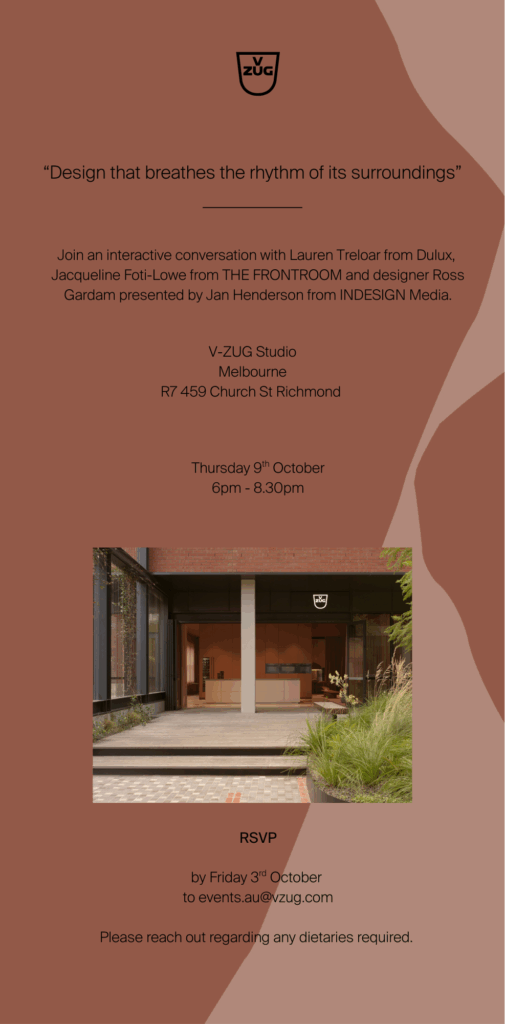
Photography
Tess Kelly
